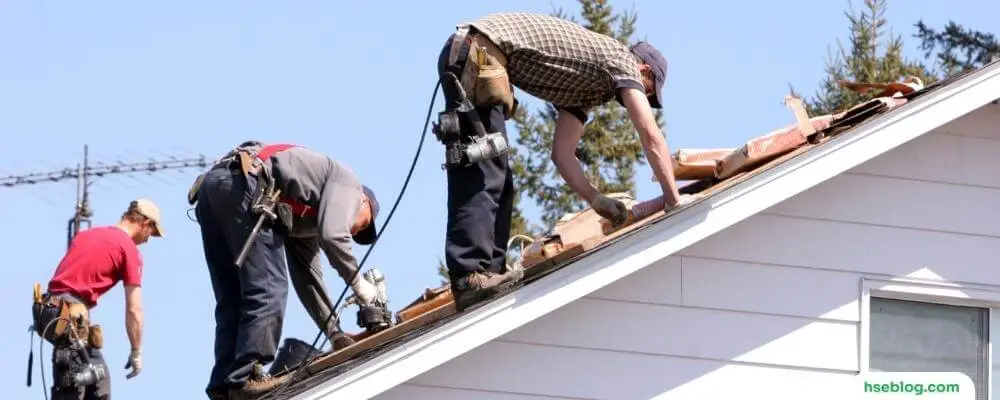
6 Important Roofing Safety Tips Your Team Needs To Know
How To Avoid Common Hazards When Installing And Repairing Roofs.
It can be dangerous and difficult to work on a rooftop. Roofs are not designed for foot traffic, but repairs and inspections do require it. Safety should always be your top priority, whether you’re working on a construction site or installing new solar panels.
You and your workers can avoid many common roof-related accidents by using the right safety equipment and taking precautions.
Safety Advice For Roofs.
Keep the work area clean and note any hazards.
Make sure that the area is well-organized, clean, and well-blocked from passers by. On the roof or the ground, note any area that could be dangerous, such as power lines, unsafe entry points, skylights, or any damaged spot on the roofing.
Avoid working on the roof in extreme weather conditions. Snow, rain, or sleet can increase the chance of a fall, and high temperatures may cause heat exhaustion, stroke, and damage to equipment.
Strap in with a harness.
The roofing safety harness is part of a complete personal fall arrest system. The harness comes with a lanyard, rope grab, rope, and a roof anchor. Select the right harness for your worksite. Harnesses can be adapted to different work conditions.
Rooftop safety pro tip: Consider the height of the structure you are working in. You may have to use retractable lengths of lanyards if the height of your structure is high.
Install the climbing carefully.
It is important to remember these basic safety rules:
- Maintain 3-point contact with the ladder.
- Make sure all the locks are in place on the extension ladder.
- Place the base of a ladder a quarter the length of its working distance from the wall.
Rooftop safety pro tip: Wood and fiberglass ladders will be safer around electrical wires than metal ones. Jump to a metal object, even if you are several feet away.
Work In The Heat? Take Extra Precautions.
Work in the sun and take a break in the shade.
Roofs are effective heat traps, especially during the peak summer months. Roofs that are dark absorb heat and radiate it back at workers, which can lead to heat exhaustion. Offer workers a tent to shade them from the sun.
Keep hydrated.
Instead of drinking large quantities of water at once, encourage your employees to drink smaller amounts throughout the day. Cool off by providing a water bottle or cooler for your employees to use during their break.
Wear protective clothing.
Wearing protective clothing is important. This includes hats, long sleeves, trousers, and sunglasses.
Rooftop safety pro tip: Don’t forget the sunscreen. Sunscreen should be available to your workers whenever they are outside (even when the skies are overcast).
Roof Safety Is Important.
By skipping safety measures, you increase the risk of an accident, which can lead to additional costs, lawsuits, and a delay in your project’s deadline. You can reduce the risks associated with roofing by following these safety procedures.
It doesn’t take a lot to reduce the risks of working on roof repairs in dunedin. It’s important to put in place the right measures and ensure that everyone does their part.

